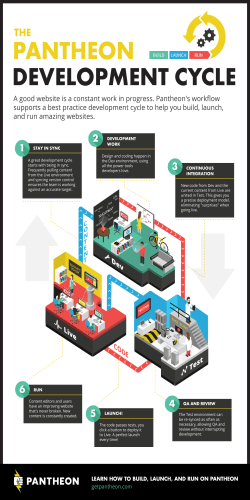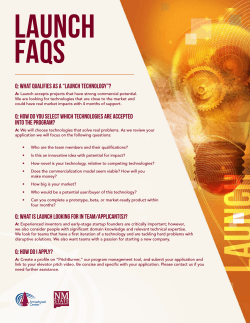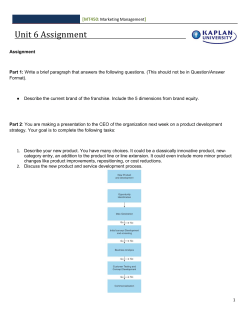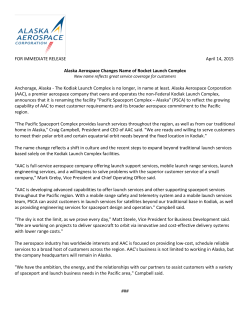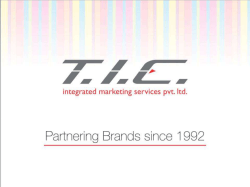
Designing an E-Reader Program
Worldreader Institutional Programs Designing an E-Reading Program: Using a BLUE Box at Your School or Library Thank you for your interest in the Worldreader BLUE Box. This document gives you all the information you need to bring a BLUE Box to your school or library and ensure the long-term success of your e-reading program. Our goal is to provide you with the tools you need to build a culture of reading in your community so that kids are reading more and reading better. Program Design Guide 1. What’s in a BLUE Box? A BLUE Box contains e-readers, e-books and Worldreader’s expertise on training and project management, everything you need to build a successful e-reading program. We also provide 1 year of technical support and 2 years of maintenance support with every BLUE Box you order, as well as support from a Partnership Development Manager to design your program, select books, finalize logistics and answer any questions that you have prior to launching the program. E-Readers E-readers are low-power, durable and easy to use. They only need to be charged every few weeks and enable you to read e-books without any connectivity. Worldreader is deviceagnostic. Rather than focusing on a specific product on the market, our objective is to choose the best device for our projects to distribute reading material to students in the developing world cost effectively. Currently, we use various models of Kindle devices interchangeably across our various e-reading programs. In addition to the devices, we include protective cases, chargers and identifying labels. E-Books Our library consists of 6,000+ titles in more than 41 languages, serving early readers (preprimary) to adult readers and including both course materials and books for leisure reading or as supplementary materials. We will work with you to recommend the most appropriate books for your program. Each e-reader comes pre-loaded with 100 books: 50 from African publishing partners and 50 from International publishing partners to ensure access to a variety of books. Expertise Worldreader currently works with partners in 12 countries in sub-Saharan Africa, with new programs launching every month. We leverage this experience to continuously improve the set of tools that we provide to our partners, including a comprehensive training manual, project management guide, monitoring and evaluation resources, community pledge forms and certificates of achievement for teachers who complete the Worldreader training course. Page 2 of 9 Worldreader is a US 501(c)(3) public charity, EIN 27-2092468 Program Design Guide 2. What is the Cost of Launching an E-Reading Program with a BLUE Box? When ordering a BLUE Box, we encourage you to consider both the cost of the BLUE Box as well as the cost of launching and supporting the project. There are also some on-going costs, which we will cover in the next section, so that you can plan for subsequent years. BLUE Box ($6,500) Worldreader currently offers two products, BLUE Box for Schools and BLUE Box for Libraries at $6,500 per BLUE Box. The BLUE Box for Schools contains 50 e-readers with 100 e-books per e-reader for a total of 5,000 e-books, while the BLUE Box for Libraries contains 35 e-readers with 200 e-books per e-reader for a total of 7,000 e-books. We work hard to manage relationships with publishers, authors, device manufacturers and in-kind donors to keep costs as low as possible, and we also provide our support and expertise if you choose to partner with us. The retail cost of implementing an e-reader program similar to Worldreader’s would be $33,975, meaning that by partnering with Worldreader, you save 80% off the retail price. With a cost of $0.95 - $1.30 per book (including the device, shipping, etc.), our BLUE Box is also 50% cheaper than implementing a similar program using paper books. Customs Clearance Fees ($100-$500, varies) The cost of the BLUE Box includes shipping to the project location, but the country where you work may charge customs or duty fees to import the devices. The exact cost depends on the destination country, and sometimes it is possible for you to apply for exemption. Our Partnership Development Managers will provide more information, if available. Charging Station ($250) The e-readers in your BLUE Box will need a storage cabinet for charging and to keep the devices safe. We ask our partners to take on the cost of building and maintaining a combination locking cabinet so that the e-readers can be easily stored and charged. Teacher Training and Community Launch ($150) Our experience shows that it is important to provide training sessions for school leaders, teachers, students, and the overall community. We provide a comprehensive training Page 3 of 9 Worldreader is a US 501(c)(3) public charity, EIN 27-2092468 Program Design Guide manual to support these training sessions, and we ask partners to find a place and time to conduct the training, as well as provide tea or lunch to teachers since this training would be in addition to their normal duties. Setting aside a 3-4 day period for training is ideal, as it allows everyone in school or at the library to focus on learning how to use the devices well. Refresher trainings are always a good idea, particularly if there are new members of staff or there has been a school break. In addition to making sure everyone is trained, it is important to build support for the project and create social pressure to protect the devices and keep them safe from damage and theft. A community launch event that includes teachers, students, parents and local leaders is a great way to engage your community and encourage them to support the e-reading program. We provide a guide on how our other partners have organized their community launch events and we hope that all of our partners can take on this cost. Project Manager Salary (Varies by region) We require all of our partners to appoint a project manager. Selecting someone who is at school or in the library every day and is driven and self-motivated sets your program up for success. Most of our partners select a current staff member at school or in the library, while others choose to hire someone new. If you choose an existing staff member, we encourage you to lessen his/her other duties or provide an additional stipend as an incentive to perform well. If you decide to hire someone new, we recommend that you research what an appropriate salary would be for that person, perhaps a similar salary to what an IT manager would make in the area where your project takes place. Managing the e-reader program is most often a part-time job, but having someone who is able to devote attention to it full-time will only increase the impact. 3. Becoming a Worldreader Partner When you order a BLUE Box, you join Worldreader’s network of partners. Not only will you receive technical support and maintenance coverage from Worldreader, but you will also have the opportunity to connect with other organizations using BLUE Boxes in your region. Worldreader also organizes annual community conferences, open to all partners, which are a platform for sharing and solving challenges and for professional development. In the past we Page 4 of 9 Worldreader is a US 501(c)(3) public charity, EIN 27-2092468 Program Design Guide have covered monitoring and evaluation, fundraising, best practices and more. We hope that by ordering a BLUE Box, you will contribute to our community by sharing your lessons learned and providing feedback to Worldreader about how we can improve the BLUE Box even further. 4. How Can I Make This Work at My School or Library? We understand having one e-reader for every student represents a large, upfront investment on the part of our partners. Therefore, if that is not possible, we recommend starting with 50 ereaders, which are shared among 2-3 classrooms, depending on how many students are in each class. No two e-reader programs are exactly the same, but we do have some recommendations that you should think through as you are planning your project. 1. Elect a project m anager to cham pion the e-reader program on the ground. As stated above, we require all of our partners to appoint a project manager. Selecting someone who is at school or in the library every day and is driven and self-motivated sets your program up for success. Most of our partners select a current staff member at school or in the library, while others choose to hire someone new. If you choose an existing staff member, we would encourage you to lessen his/her other duties or provide an additional stipend as an incentive to perform well. If you decide to hire someone new, we recommend that you research what an appropriate salary would be for that person. Managing the e-reader program is most often a part-time job, but having someone who is able to devote attention to it full-time will only increase the results that you see. 2. For school-based program s, make use of the e-readers in at least one of the classroom s at your school. While it may not be possible for every classroom to make use of the e-readers, we do encourage our partners to work with teachers and administrators to see how the e-readers can be incorporated into classroom activities. This allows some students to spend more time to interact with the devices – and the more they read and the better results you will see. 3. For school-based program s, provide opportunities for all students to use the e-readers, if possible. While you might choose to focus on just two grade levels, it is important that all of the students and teachers at your school feel included in the program. Even if only some students are using the e-readers in class, perhaps you Page 5 of 9 Worldreader is a US 501(c)(3) public charity, EIN 27-2092468 Program Design Guide can provide free reading time for the other students or come up with after school or weekend activities to engage other students in reading so that they can also benefit from the program and help create more support for the program throughout your school community. 4. Allow students to take the e-readers hom e. Though this is easiest to do when each student has her own e-reader in school-based programs, but even in situations where there are fewer devices than there are students, partners can set up a library-like system so that students have the opportunity to bring the devices home. While this might raise some concerns in terms of security, allowing students to bring the e-readers home gives them much more time to read and it enables them to use the device both for studying and for pleasure reading. In addition, they are very likely to share with siblings, parents and friends, meaning the impact of your program will go far beyond the walls of your school. For library-based programs, you should also carefully consider an overnight borrowing policy, depending on the needs of your community. There are many other things to think about as you begin to plan how to implement an e-reader at your school. If you choose to partner with Worldreader, one of our Partnership Development Managers will help you work through all of the details. The following is one example of how sharing e-readers across multiple classrooms can work in a school. ABC School has just over 250 students, with approximately 40-45 students in each of the grade levels one through six, and a budget to purchase about 100 devices. Since each classroom set requires about 50 e-readers, the school can choose to utilize their 100 devices in two sets - one for grades 1-3 and one for grades 4-6. The key to deciding this depends on the grade levels and how well the division would work with the student body. ABC School can then increment the number of devices every year, getting more time to fundraise for subsequent years. Ongoing Costs—Years 2-3 As a Worldreader partner, you will have on-going access to our discounted library. Students typically finish the 100 pre-loaded books in the first year, and will require more books to keep them interested in reading. Even though you do not need Wi-Fi to use the e-readers, you will need a Wi-Fi connection to download new books. Many of our partners do not have Wi-Fi at their schools but they find that traveling with the e-readers to a location with Wi-Fi to download books is fairly easy. Page 6 of 9 Worldreader is a US 501(c)(3) public charity, EIN 27-2092468 Program Design Guide • Additional books: Once your program has launched, you will have ongoing access to Worldreader’s library of discounted books. We recommend budgeting for a minimum of 100 books per device per year ($2,500/year) starting one year after the launch. • Training: Worldreader also provides optional training services. If you would like for a Worldreader staff person to run in-person training sessions for your project manager and your school or library community, please speak with your Partnership Development Manager for more information on pricing. Page 7 of 9 Worldreader is a US 501(c)(3) public charity, EIN 27-2092468 Program Design Guide 5. Timeline and Process Once we decide to work together, both parties sign a Memorandum of Understanding (MOU) and initiate a transfer of funds to cover the cost of the Worldreader program. Over the next two months, together, we order devices, select books, hire or designate a Project Manager, plan the training, and reach out to the community. Laying this groundwork usually takes two months, after which we launch the project! • Begins at least 2 months prior to launch • Interested partners send us an inquiry 1. • Partners are contacted for a phone or Skype follow-up. Discussions and due Evaluation dilligence are completed. 2. MOU signed • Signed at least 6 weeks prior to launch • An MOU is an agreement that outlines the terms of our relationship. It will include a timeline, a final price and other details. • All MOUs are automatically invalidated if funding is not received by the specified date and no alternative has been discussed. • Book selection process begins. Project manager selection process also begins. Worldreader offers assistance remotely but partners are responsible for driving the 3. Launch selection process. planning begins 4. Payment made • Payment must be made by partner by the date agreed upon in the MOU • Once funds are received, devices will be ordered and registered • Book selection is finalized and Project Manager is hired or designated • All parties have read and discussed the Teacher and Student Training Manual 5. Launch • All hardware, accessories, and other materials have been received planning • All e-books have been received on the e-readers complete • Partner has the option of having the training of the Project Manager completed by a Worldreader specialist in person. • If a specialist is not present an alternate plan must be developed for training, which 6.Training will take 2 days. Subsequently the Project Manager trains all teachers or staff (between 1.5-2 days). • The “Launch” refers to the training of the students and, if our partner deems it appropriate, a community launch to inform the larger community about the project and receive their support and buy-in. Student training takes between 1-2 days. 7. Launch Page 8 of 9 Worldreader is a US 501(c)(3) public charity, EIN 27-2092468 Program Design Guide 6. What Happens After the Launch? W orldreader 1. Updates to best practices / manuals 2. Access to a wide variety of books at steeply discounted prices 3. Technical support when selecting and downloading new books 4. Guidance on how to expand and improve your program Page 9 of 9 Worldreader is a US 501(c)(3) public charity, EIN 27-2092468 Partner 1. Submit returns form in the case of device failures 2. Photo and video documentation 3. Post-launch content selection and reception 4. Monitoring and evaluation 5. Community and government relations
© Copyright 2025
